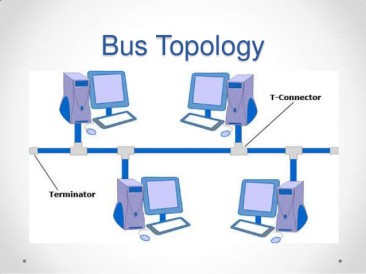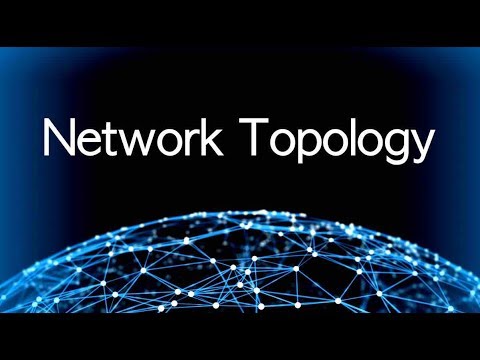Network Topologies
Building up a network in an environment comes in handy with a topology. One may ask what is a topology? A topology is a layout, virtual shape of the network. And a topology can be classified in two forms namely: Physical or logical topology.
The physical topology of a network can be referred to as the configuration of cables, nodes, links, computers and other peripherals devices. In other words, the physical topology should not be perplexed with the logical topology which is the method used to pass information and how workstations (computers) communicate with one another.
This article introduces and emphasizes on the standard topologies of computer networking and categorized into the following basic types:
The Bus Topology.
In the bus topology, all of the computers are connected in a straight line. This topology is an older topology that uses the coaxial cable of which you would need terminators to be used at each end of a bus segment to prevent signals from bouncing. When using a bus topology, a single break in the cable would take down the entire network.

The Star Topology.
The star topology is a regularly seen technology in today’s networking environment and the most common topology used 99% in today’s Local Area Network (LAN). In the star topology all of the computers are connected through a central connection point called the ‘hub’, and very often these days instead of being a hub it will be something called a switch. One the nice things about the star topology is that if you had a single break in one of the cables, only that one computer would be unable to communicate with everybody else while the rest of the computers can still communicate through the hub or the switch. The only way the entire network goes down is when there is a failure in the hub or switch.

Note: The difference between a hub and a switch is that, a hub is a device that allows one to connect multiple PCs to single network, it may be based on Ethernet, and USB connections while a switch is a control unit considered to more intelligent that turns to flow of electricity on or off in a circuit.
The Ring topology.
In the ring topology, the connection of the computers is strategical arrange in a circular way or fashion. Due to the it circular form, data is passed around the ring from computer to computer. So in this particular topology you have Computer A who want to send, no matter which computer it wants to send it to, it must send it to the next computer on the ring and then that computer can pass it along till it gets to the final destination. In a true ring physical topology, a break in the cable would take down the entire network and the reason is that data travels around the ring in one direction.
Note: One of the common access methods that was used on a ring network is called a ‘Token Ring Network’ where it would use something named ‘Token Passing’ appropriately get the data around the ring to make sure the data is delivered to the specified computer.

The Mesh Topology.
In the mesh topology the connection of the computers in a network are connected to all other computers. This is because all the connections are direct, and the network can handle very high-volume traffic. It is also robust because if one connection fails, the others remain intact. Security is also high since data travels along a dedicated connection. This type of topology requires a lot of cables and is, therefore, expensive. Many of the connections are also redundant since there are several different paths for data to travel from one node to another. These topology is typically used in a Wide Area Network (WAN); it also provides fault tolerance in the event of a connection failure.

The Tree Topology.
In the tree topology, there is a combination of multiple star topologies onto a bus. Hub devices for each star topology are connected to the bus. Each bus is like the root of a tree of devices. This provides great flexibility for expanding and modifying the network. If the backbone line breaks, the entire network segment goes down.

The Hybrid Topology.
In the hybrid topology, there is the combination of more than one standard topology, such as the star and bus topology. It is used especially in a large network where there are multiple subnetworks within the network. In that case, multiple subnetworks may have multiple topologies connected with each other. Most Wide Area Networks (WANs) are hybrid networks. A hybrid topology provides several merits such as effective management of network traffic. This means that if one network segment becomes unusable, the entire network is not affected. In this case hybrid topology also has a few demerits such as difficult installation and reconnection.

![]()


Leave a Reply